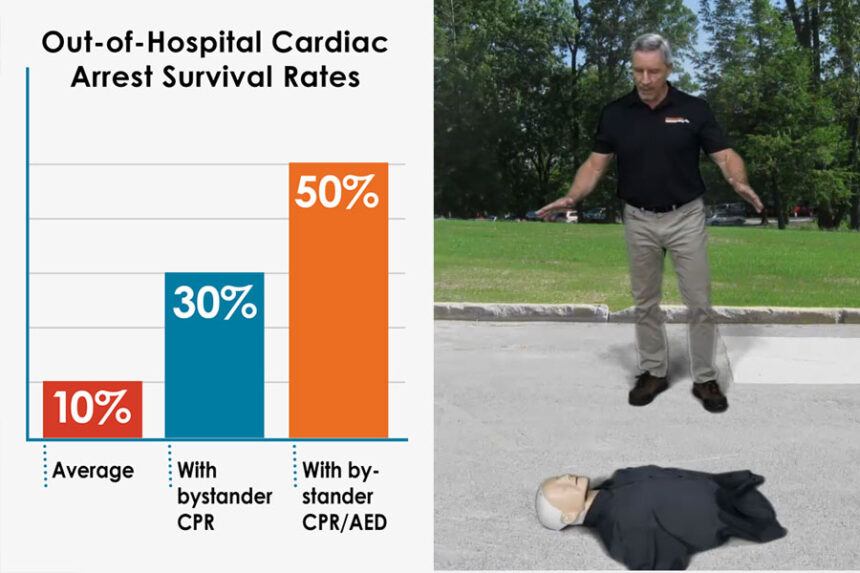Bystander CPR can Double Victims Survival

A recent study by the American Heart Association states victims suffering from out of hospital cardiac arrest have twice the survival rate when CPR is performed by a witness bystander. Which means if you witness the collapse of a person, and they are unresponsive and not breathing you should begin CPR immediately. The simple action of delivering chest compressions will supply vital organs with blood flow. This will improve the effectiveness of an AED (automatic external defibbulator) when it arrives.
Why wouldn’t everyone perform CPR in an emergency? Here are some of the reasons.
- Lack of confidence in their skills
- Fear of infection
- Fear of being sued
- And some people simply panic
Currently, less than 20% of the population holds a certification in CPR. That would explain the lack of confidence in one’s skills. Of course, training would address all the other reasons people are unwilling to perform CPR in an emergency.
The more people that learn the skill of CPR and AED use means the more lives that can be saved every year. The CPR class should cover choking, shock, recovery position and most important breathing skills. CPR for drowning, choking, drug overdose, children and infants all need rescue breaths to avoid brain damage. I think we should take it one step further with a First Aid course also. We need to address bleeding control, burns, seizures, heart attacks, strokes and more. Our families need to know that we could care for them in a life-threatening emergency.
Here’s a quick video for Hands-Only CPR



Comments are closed.